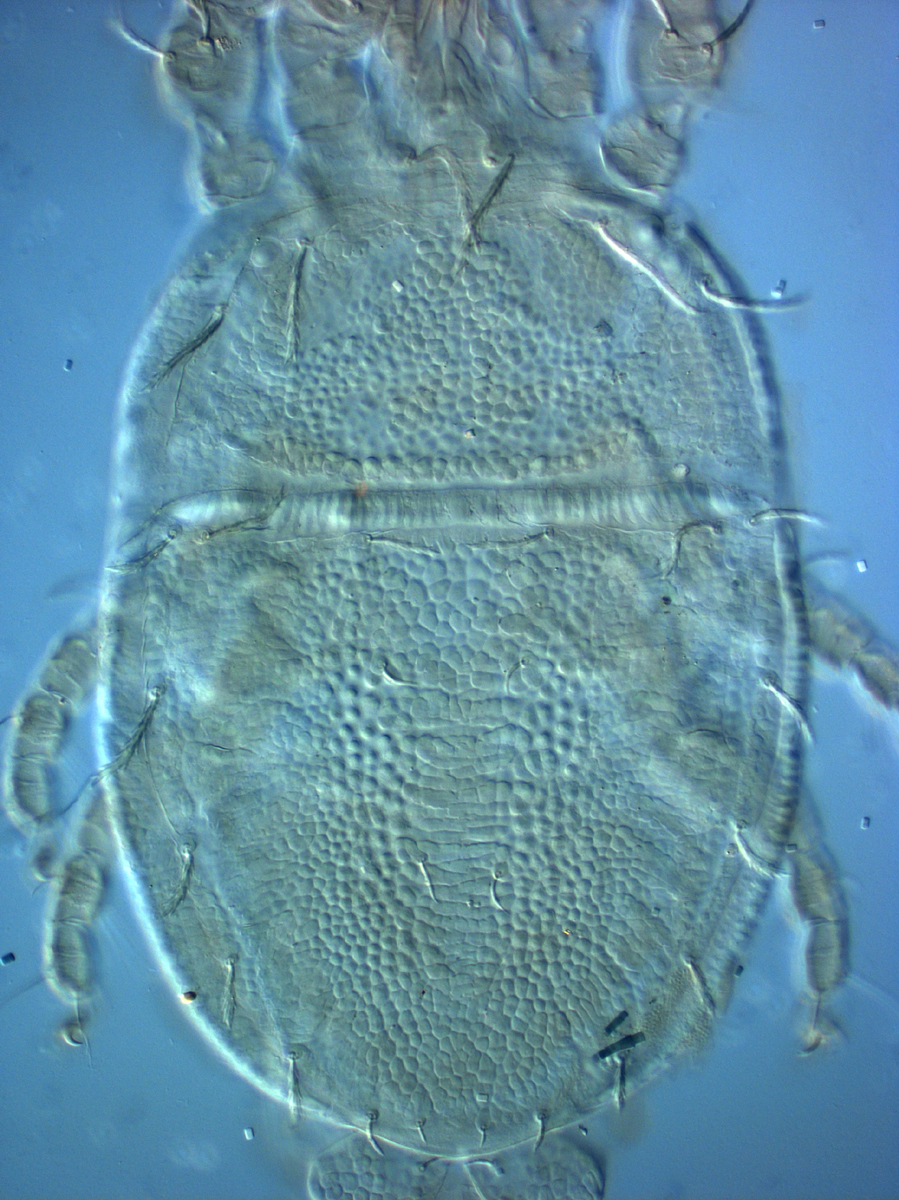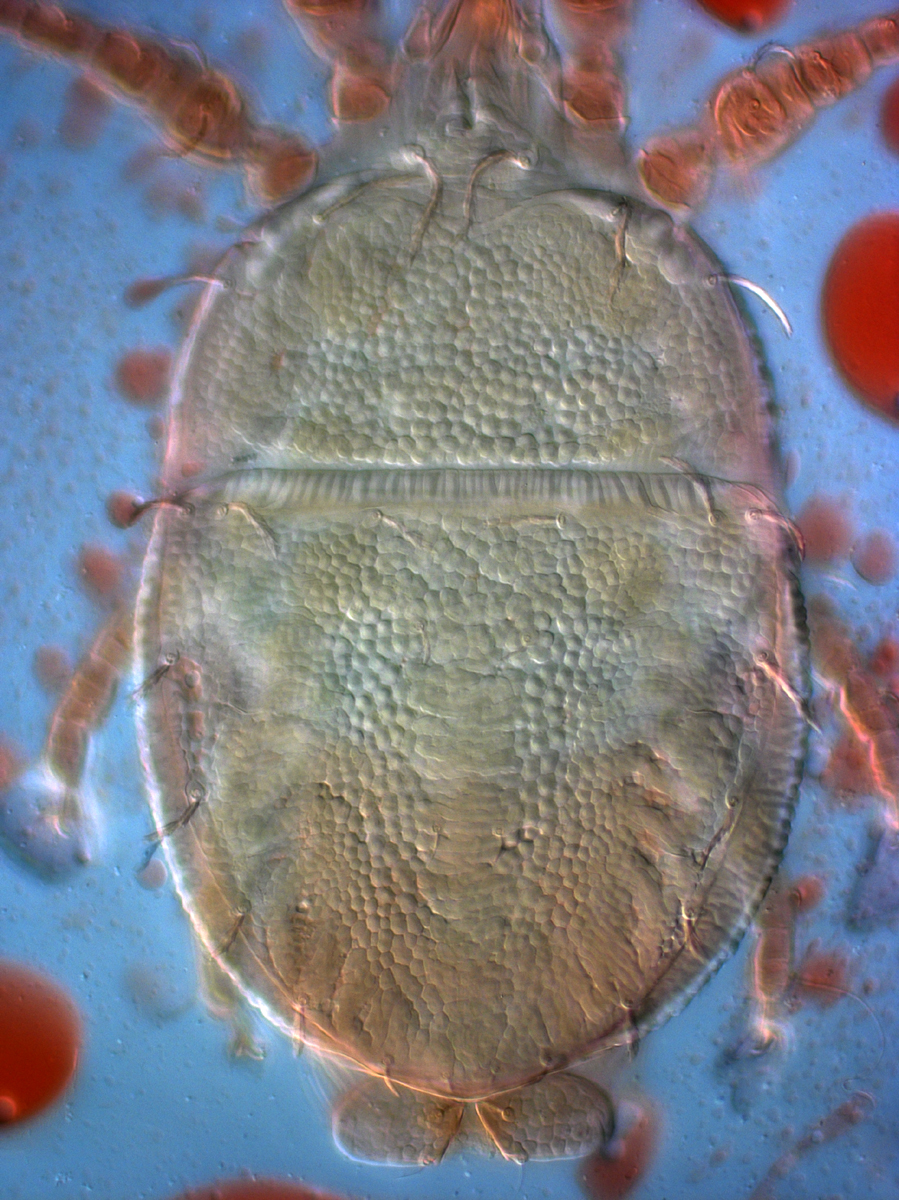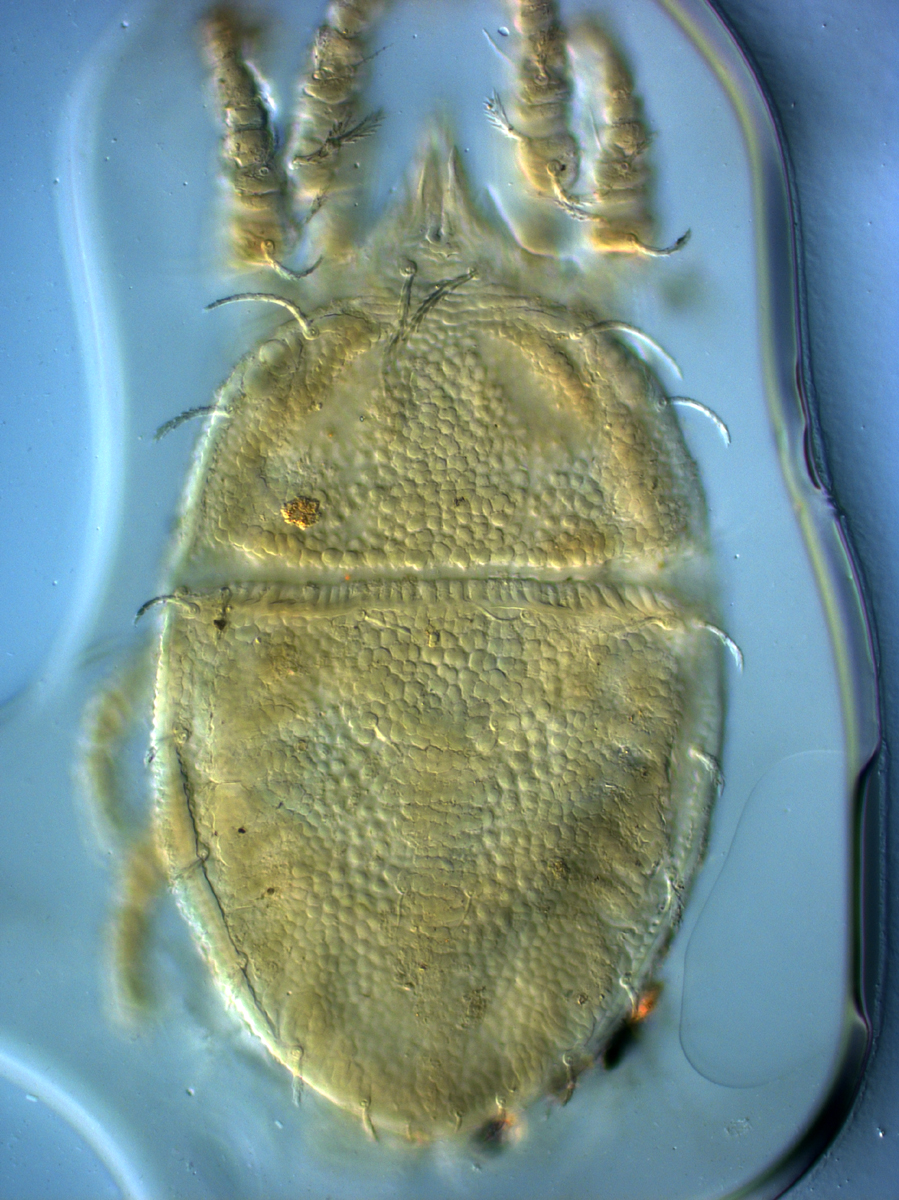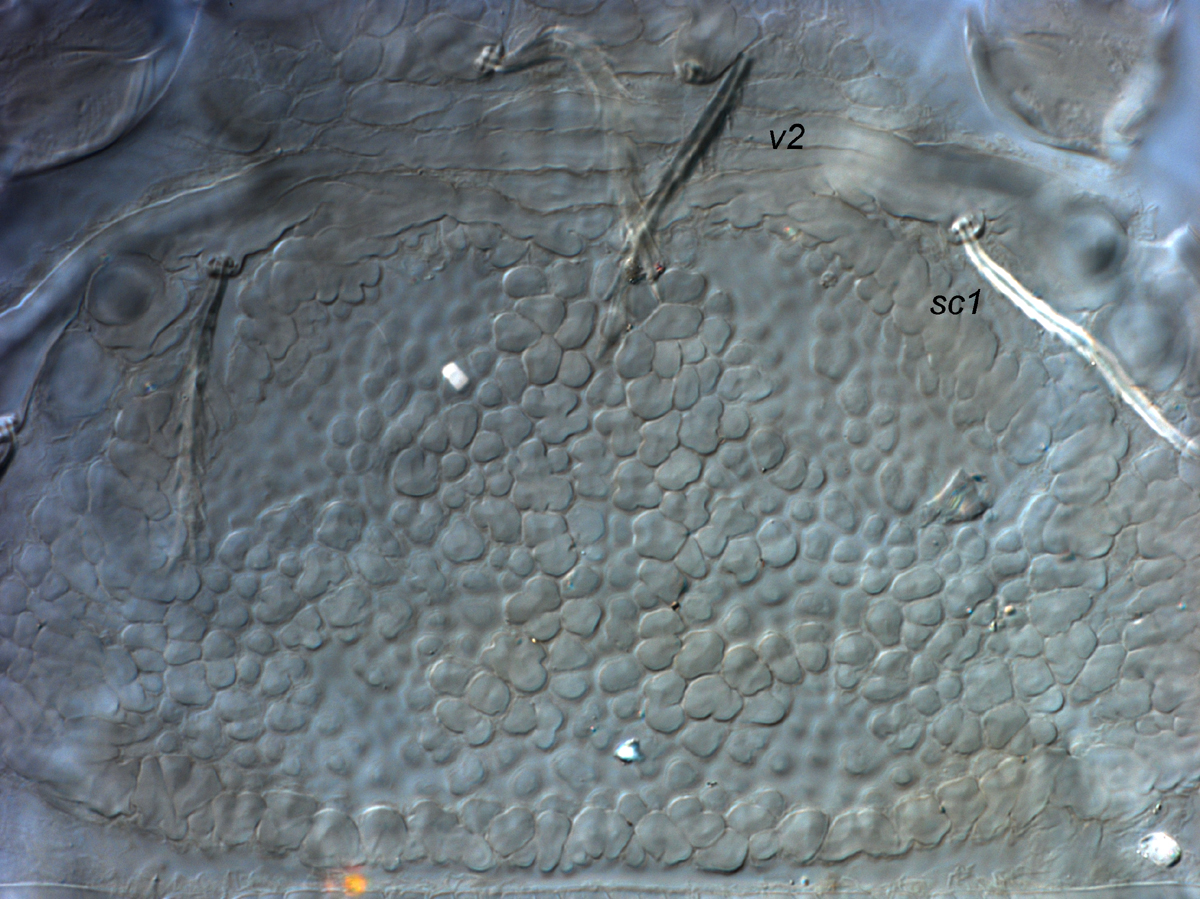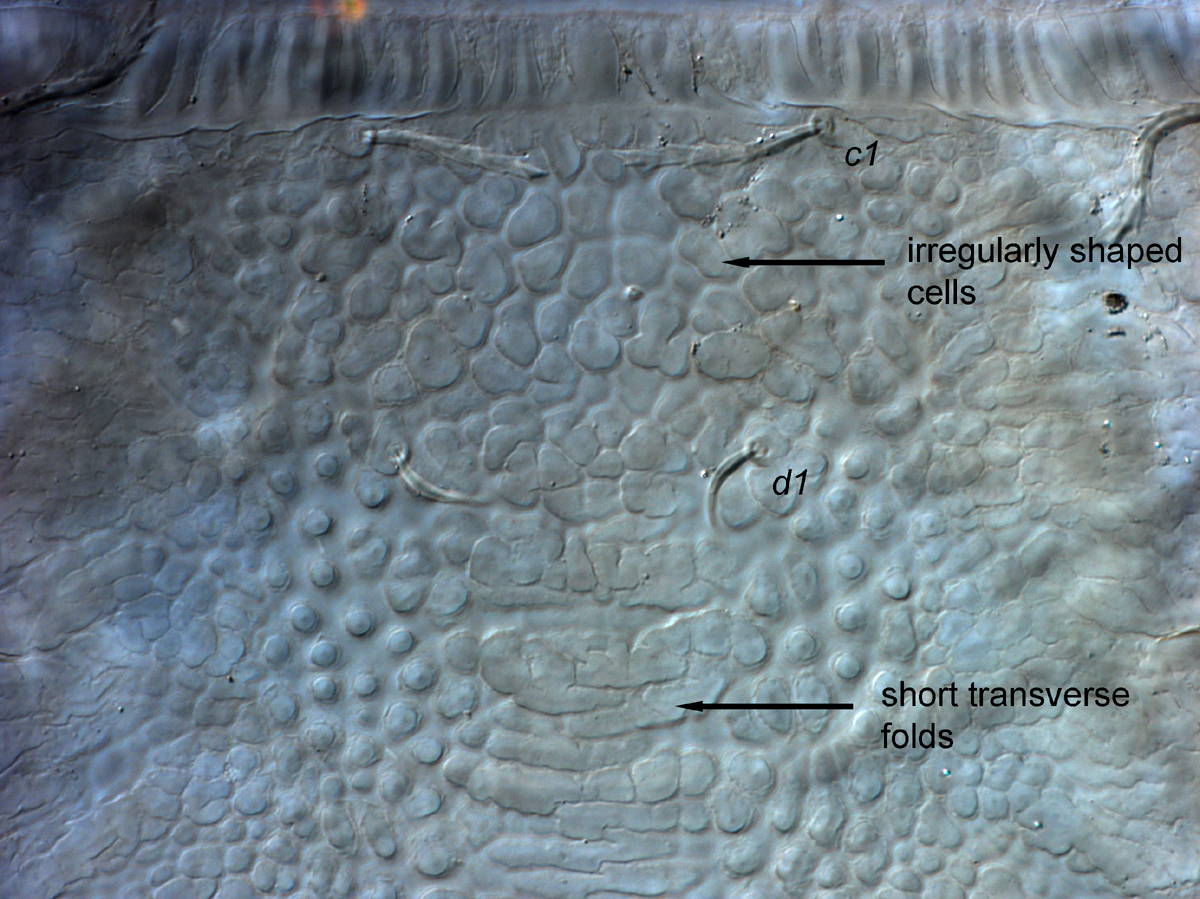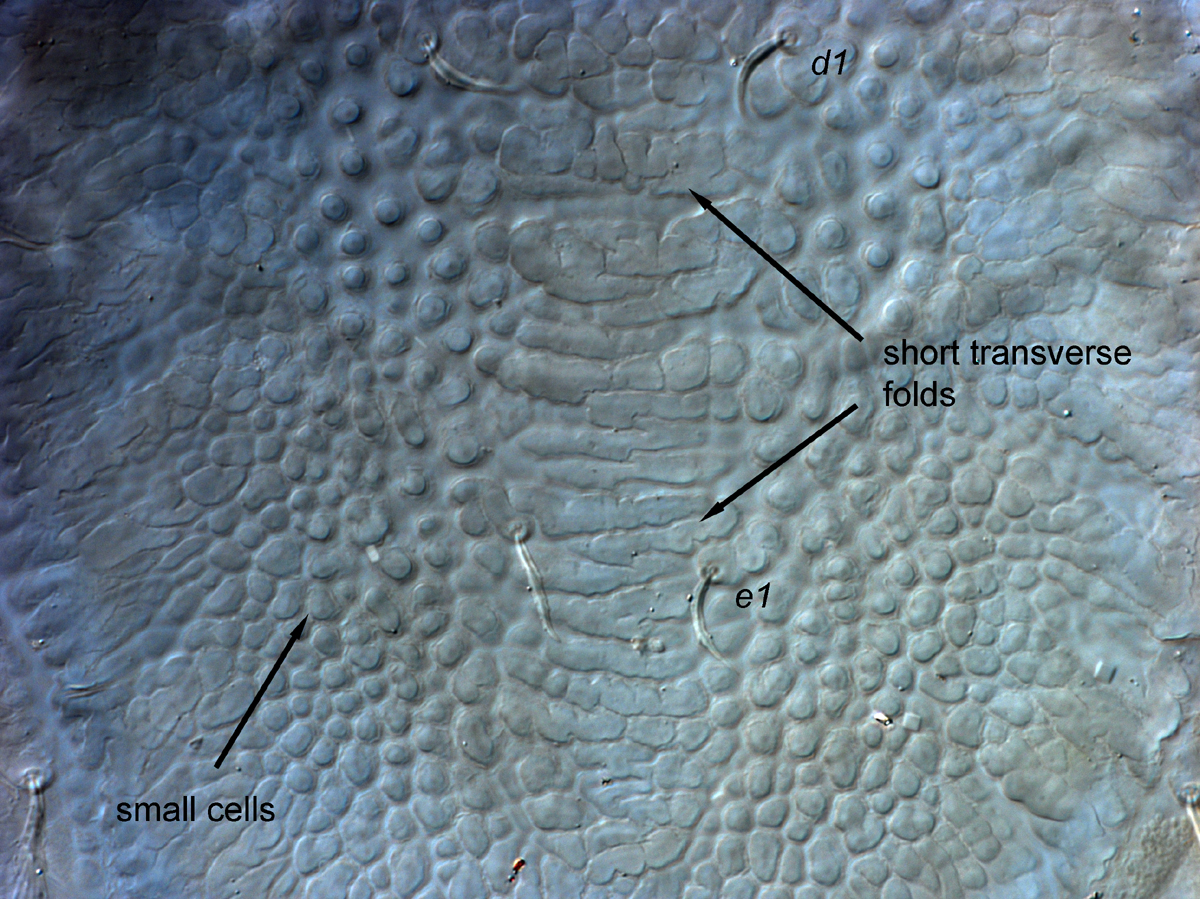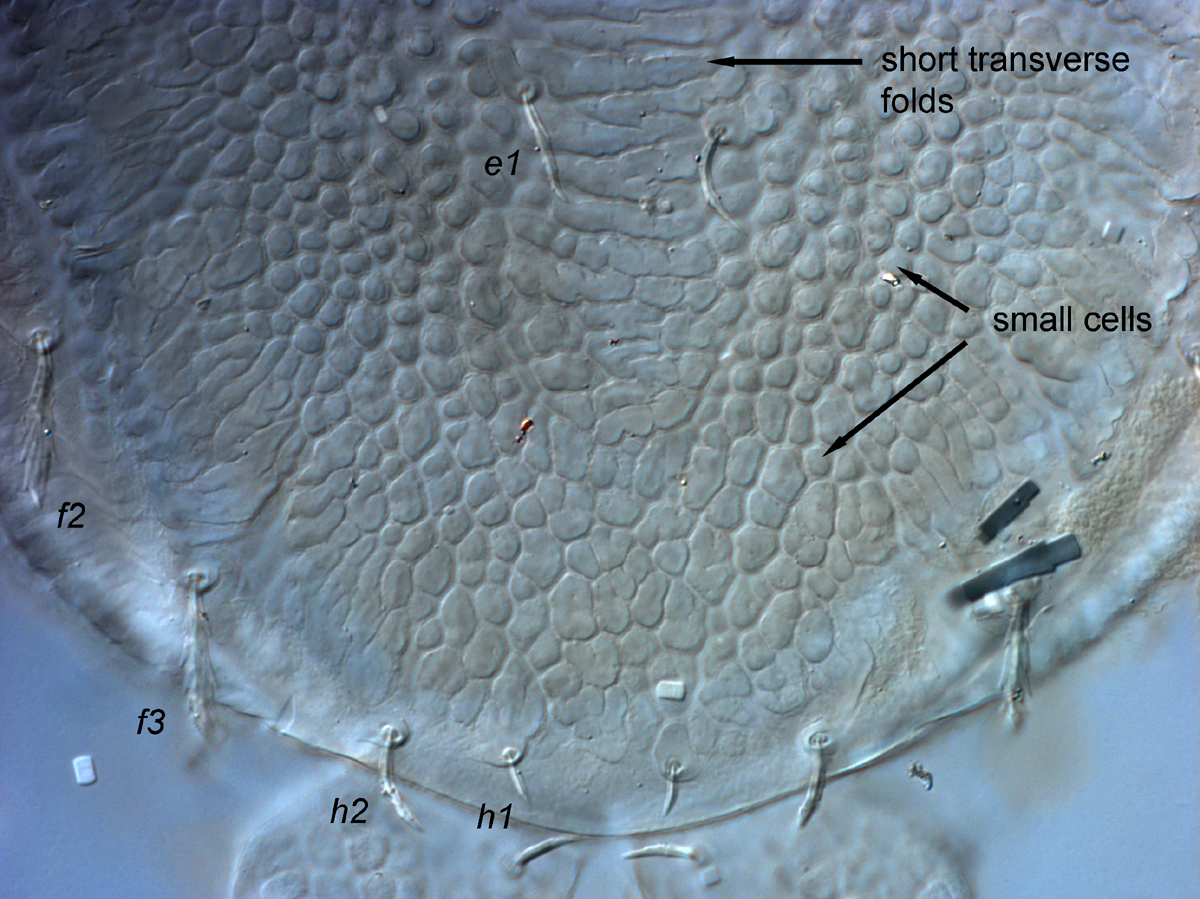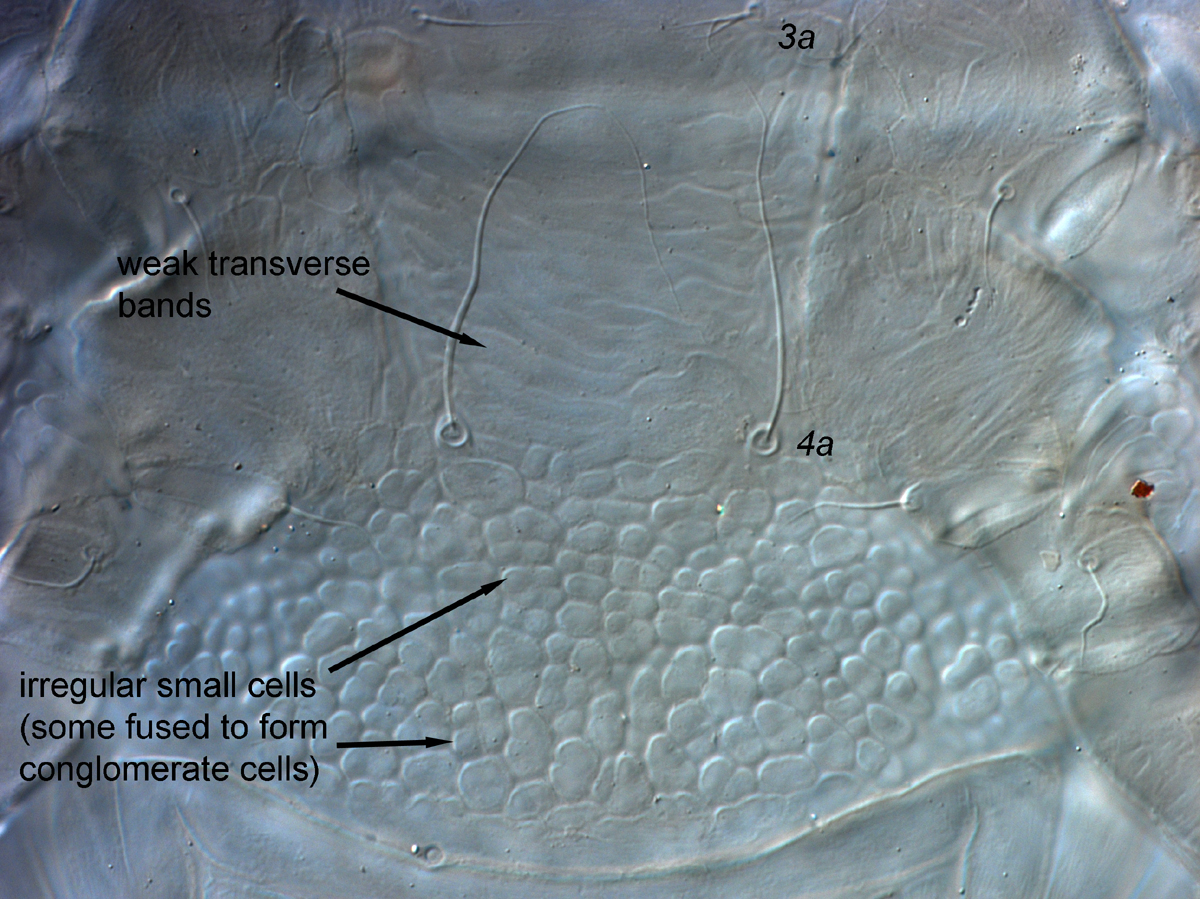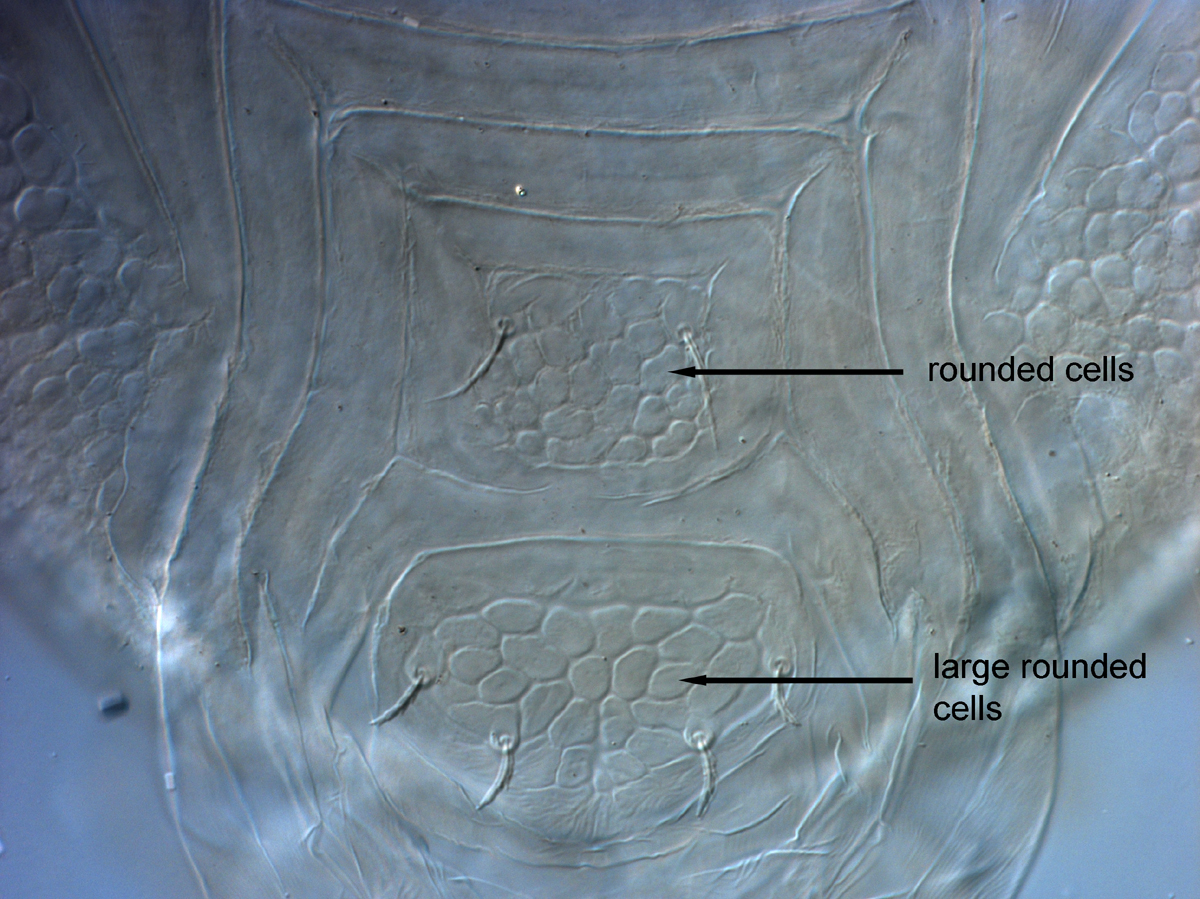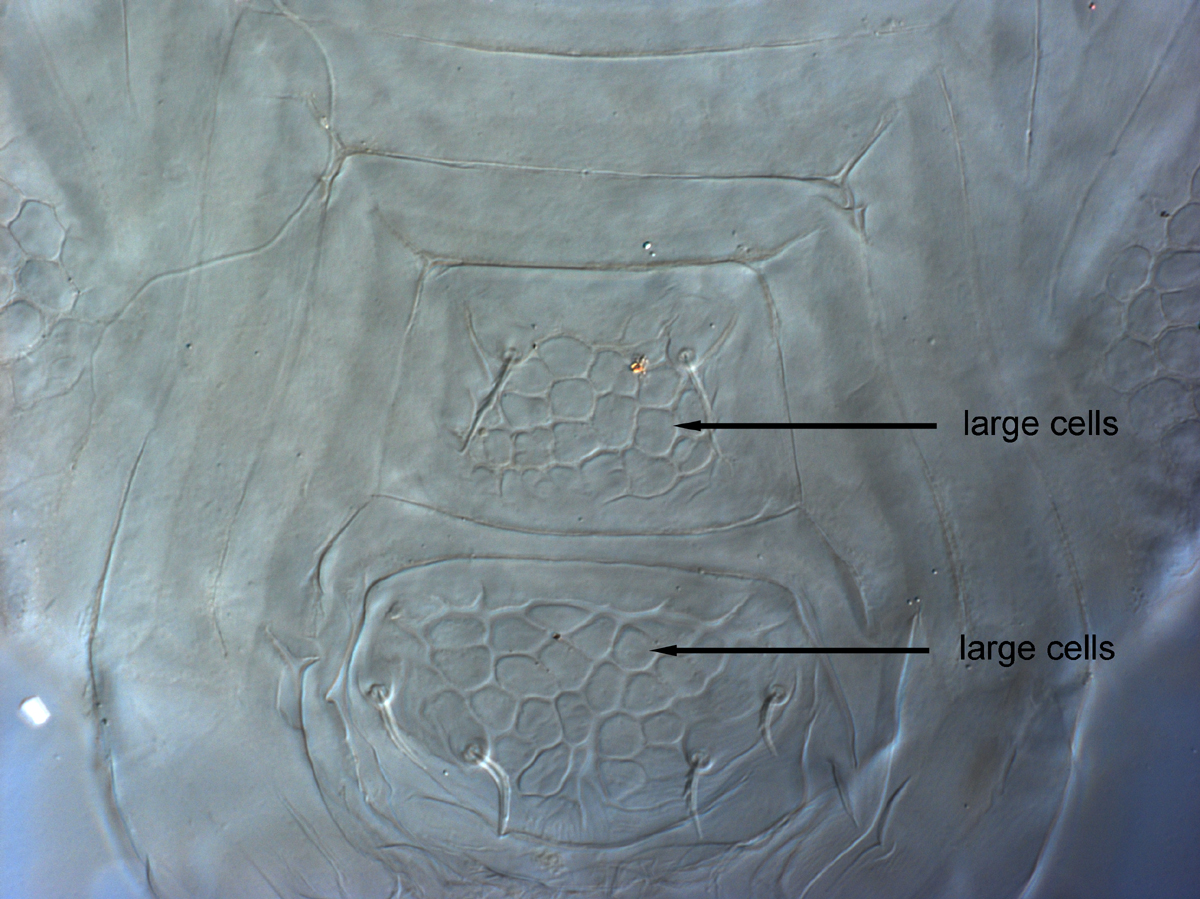Cenopalpus spinosus
|
Fig. 1. Cenopalpus spinosus adult female dorsum.
|
|
Fig. 2. Cenopalpus spinosus adult female dorsum
|
|
Fig. 3. Cenopalpus spinosus adult female dorsum.
|
|
Fig. 4. Cenopalpus spinosus adult female prodorsum.
|
|
Fig. 5. Cenopalpus spinosus adult female anterior dorsal opisthosoma.
|
|
Fig. 6. Cenopalpus spinosus adult female dorsal opisthosoma between setae d1 and e1.
|
|
Fig. 7. Cenopalpus spinosus adult female posterior dorsal opisthosoma.
|
|
Fig. 8. Cenopalpus spinosus adult female venter, between legs III and IV.
|
|
Fig. 9. Cenopalpus spinosus adult female posterior venter.
|
|
Fig. 10. Cenopalpus spinosus adult female posterior venter.
|
Authority
DonnadieuTaxonomic history
Tenuipalpus spinosus Donnadieu 1875 [original designation]
Brevipalpus spinosus Baker 1949
Cenopalpus spinosus Pritchard & Baker 1958
Synonyms
Tenuipalpus glaber [syn. Donnadieu 1875]
Tenuipalpus geisenheyneri [syn. Pritchard & Baker 1958]
Brevipalpus geisenheyneri [syn. Baker 1949]
Brevipalpus donnadieu [syn. Baker 1949]
Flexipalpus donnadieui [syn. Pritchard & Baker 1958]
Key characters
Adult female (Figs. 1, 2, 3)
small to medium, irregularly shaped cells (Fig. 4)
prodorsal setae longer than opisthosomal setae; strongly barbed (Fig. 4)
Central Opisthosoma
c1-d1: reticulate, with large irregularly shaped cells (Fig. 5)
d1-e1: cells fusing to form series of short transverse folds (Fig. 6)
e1-h1: series of short transverse bands becoming reticulation with small cells towards h1 (Fig. 7)
Sublateral Opisthosoma
reticulation with small cells, convex, irregularly shaped (Fig. 6)
Dorsal Setae
c1, c2, c3, d3, e3, f2, f3 > d1, e1, h2 > h1
Venter
3a to 4a: cuticle between 3a-3a more or less smooth, with extremely fine transverse striae; cuticle between 4a-4a with weak transverse bands (Fig. 8)
4a to ventral plate: cuticle with irregularly shaped cells, often fused together to form conglomerate cells (Fig. 8)
ventral plate: medium to large rounded cells (Figs. 9, 10)
genital plate: large rounded cells (Figs. 9, 10)
femur with 0 setae; genu with 1 dorsal seta; tibia with 2 setae; tarsus with 3 setae (sensory)
dorsal opisthosomal setae c1, d1, e1, h1, h2 minute
remaining dorsal setae long (v2, sc1, sc2, c2, c3, d3, e3, f2, f3)
Distribution
Algeria*, France*, Germany, Greece, Iran, Monaco*.
* = confirmed specimens
Hosts
Mainly Rosaceae: Oenothera sp. (primrose); Rosa sp. (rose); Rubus fruticosus (European blackberry)*; Rubus spp.* (blackberry, dewberry, raspberry).
In addition to: Cornus sp. (dogwood, Cornaceae).
* = confirmed specimens.
Remarks
This species is in the C. spinosus species group sensu Hatzinikolis et al. (1999).
This mite seems to prefer the underside of the leaves of is host. It causes yellow to dark spots when it feeds on roses.
The early history of this species is somewhat confusing as the nymphs were referred to as spinosus but the adult female was described as a different species, glaber (Pritchard & Baker 1958).

